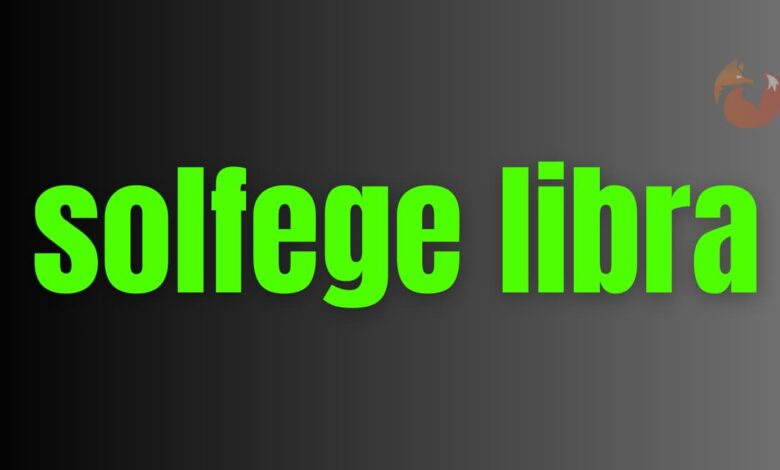The World Of Music Education, Solfege Libra

Introduction to Solfege Libra
In the world of music education, solfege is a foundational tool that has been utilized for centuries. It is a method used to teach pitch and sight-singing in Western music. The term “solfege” originates from the Italian “solfeggio,” and it involves singing the scales using syllables like “Do, Re, Mi, Fa, Sol, La, Ti.” However, the concept of Solfege Libra is an advanced extension of this technique, delving deeper into the intricacies of musical theory and the application of solfege in various musical contexts. This article will explore the importance of solfege, provide a detailed overview of Solfege Libra, and offer insights into how this method can enhance musical understanding and performance.
What is Solfege?
Solfege is a music education method used to teach aural skills, pitch, and sight-singing. The system is based on assigning specific syllables to each note of the scale. These syllables are Do, Re, Mi, Fa, Sol, La, and Ti, which correspond to the notes of the major scale. Solfege is divided into two primary types: fixed-do and movable-do.
- Fixed-Do Solfege: In this system, each syllable corresponds to a specific pitch, regardless of the key. For example, “Do” is always C, “Re” is always D, and so on.
- Movable-Do Solfege: In this method, “Do” is the tonic (the first note) of whatever key is being sung. For example, in the key of C major, “Do” is C, but in the key of G major, “Do” is G.
The Importance of Solfege in Music Education
Solfege plays a crucial role in developing a musician’s ear and understanding of musical concepts. It helps students internalize pitch relationships and intervals, making it easier to sight-read music and perform accurately. By practicing solfege, musicians can also improve their intonation and harmonic understanding, as it trains the ear to recognize and reproduce musical intervals with precision.
Understanding Solfege Libra
Solfege Libra is an advanced approach to solfege that integrates elements of both fixed-do and movable-do systems. This method is designed to provide musicians with a more comprehensive understanding of musical theory, particularly in relation to complex harmonic structures and modulations. Solfege Libra emphasizes the importance of context in musical interpretation, allowing musicians to adapt their solfege practice to different musical styles and genres.
The Application of Solfege Libra in Musical Performance
Incorporating Solfege Libra into musical training can significantly enhance a musician’s ability to navigate complex pieces. This method is particularly useful in classical music, where modulations and key changes are frequent. By practicing Solfege Libra, musicians can develop a more intuitive sense of pitch relationships and harmonic progressions, enabling them to perform with greater accuracy and expression.
Solfege Libra and Sight-Singing
One of the key benefits of Solfege Libra is its application in sight-singing. Sight-singing is the ability to read and sing music at first sight, without prior rehearsal. Solfege Libra enhances this skill by training the musician to quickly identify and sing pitches in relation to the tonic of the scale. This method also helps in recognizing modulations and key changes, which are common challenges in sight-singing.
The Relationship Between Solfege Libra and Ear Training
Ear training is a fundamental aspect of music education, and Solfege Libra plays a vital role in this process. By using Solfege Libra, musicians can develop a more refined ear for pitch, rhythm, and harmony. This method trains the ear to recognize not only individual notes but also the relationships between them, which is essential for advanced musical analysis and performance.
How to Practice Solfege Libra
To effectively practice Solfege Libra, musicians should start with basic solfege exercises and gradually incorporate more complex elements. This might include:
- Singing scales using both fixed-do and movable-do systems.
- Practicing intervals by singing the solfege syllables for different intervals.
- Sight-singing exercises that involve modulations and key changes.
- Harmonic analysis using solfege to identify chord progressions and harmonic structures.
The Benefits of Solfege Libra for Musicians of All Levels
Whether you are a beginner or an advanced musician, Solfege Libra can offer numerous benefits. For beginners, it provides a solid foundation in pitch recognition and sight-singing. For advanced musicians, it offers a deeper understanding of complex musical concepts and enhances their ability to perform challenging repertoire.
Integrating Solfege Libra into Music Curriculum
Music educators can integrate Solfege Libra into their curriculum to provide students with a more comprehensive understanding of musical theory and aural skills. By incorporating this method into regular practice, students can develop a more intuitive understanding of music, which will benefit them in all aspects of their musical journey.
Resources for Learning Solfege Libra
For those interested in learning more about Solfege Libra, there are numerous resources available. These include online courses, textbooks, and apps that offer solfege exercises and ear training. Additionally, joining a choir or music ensemble can provide practical experience in applying solfege techniques in a group setting.
Conclusion: Mastering Solfege Libra for Enhanced Musical Proficiency
Solfege Libra is a powerful tool for musicians looking to deepen their understanding of musical theory and improve their aural skills. By incorporating this method into regular practice, musicians can develop a more refined ear, improve their sight-singing abilities, and enhance their overall musical performance. Whether you are a student, educator, or professional musician, mastering Solfege Libra can open new doors in your musical journey.




